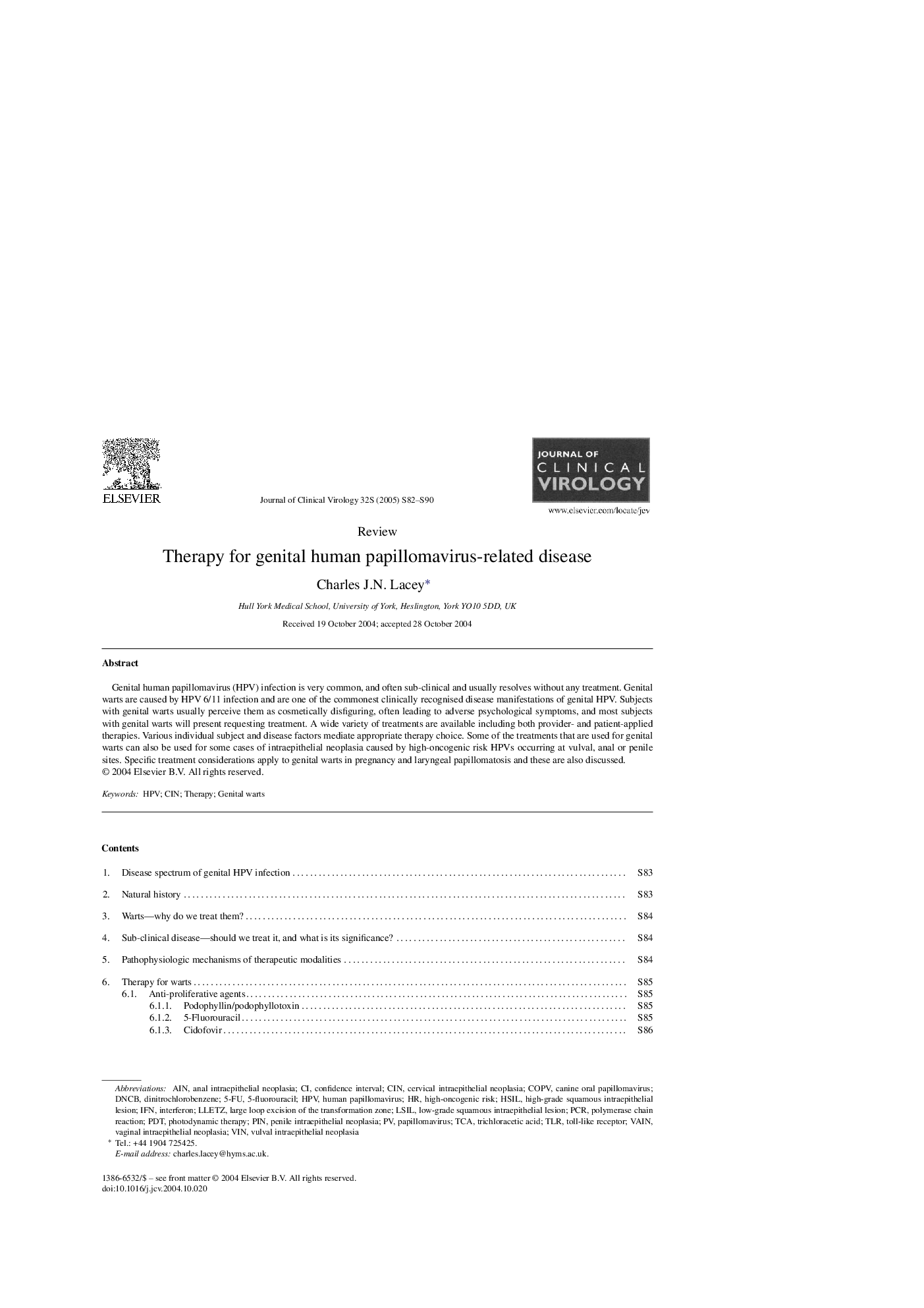| Article ID | Journal | Published Year | Pages | File Type |
|---|---|---|---|---|
| 9268286 | Journal of Clinical Virology | 2005 | 9 Pages |
Abstract
Genital human papillomavirus (HPV) infection is very common, and often sub-clinical and usually resolves without any treatment. Genital warts are caused by HPV 6/11 infection and are one of the commonest clinically recognised disease manifestations of genital HPV. Subjects with genital warts usually perceive them as cosmetically disfiguring, often leading to adverse psychological symptoms, and most subjects with genital warts will present requesting treatment. A wide variety of treatments are available including both provider- and patient-applied therapies. Various individual subject and disease factors mediate appropriate therapy choice. Some of the treatments that are used for genital warts can also be used for some cases of intraepithelial neoplasia caused by high-oncogenic risk HPVs occurring at vulval, anal or penile sites. Specific treatment considerations apply to genital warts in pregnancy and laryngeal papillomatosis and these are also discussed.
Keywords
DNCBLSILHSILTLRAINPDTTCALLETZ5-FULarge loop excision of the transformation zoneCOPVanal intraepithelial neoplasiaCervical intraepithelial neoplasiatrichloracetic acidinterferonIFNToll-like receptorCinTherapyPhotodynamic therapyDinitrochlorobenzeneGenital wartsVINHigh-grade squamous intraepithelial lesionLow-grade squamous intraepithelial lesionconfidence interval5-fluorouracilvulval intraepithelial neoplasiaVaginal intraepithelial neoplasiaPenile intraepithelial neoplasiapolymerase chain reactionPCRVaINPapillomavirusHuman papillomavirusHPVPIN
Related Topics
Life Sciences
Immunology and Microbiology
Applied Microbiology and Biotechnology
Authors
Charles J.N. Lacey,
